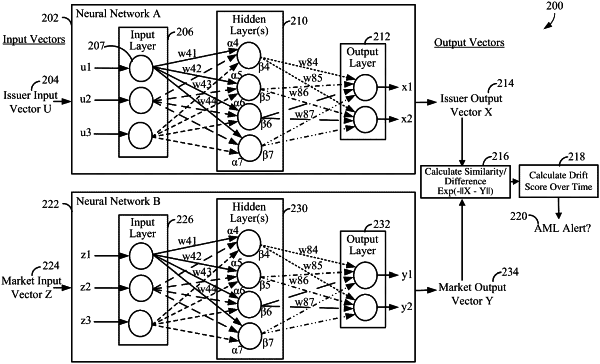| CPC G06Q 40/12 (2013.12) [G06N 3/045 (2023.01); G06N 3/049 (2013.01)] | 17 Claims |

|
1. A method for detecting anomalous financial activity, comprising:
obtaining a target vector from a first plurality of financial transactions for a target party;
obtaining a time-dependent baseline vector from a second plurality of financial transactions for a plurality of parties, wherein the first plurality of financial transactions in the target vector include financial transactions for a current time period as well as financial transactions for a plurality of L previous time periods, and the second plurality of financial transactions in the baseline vector include financial transactions for the current time period as well as financial transactions for the same plurality of L previous time periods;
training a Siamese neural network based on a plurality of sample transactions to detect differences between legitimate financial transactions and potentially money laundering financial transactions;
generating a first output vector using the target vector as input to a first network of the Siamese neural network;
generating a second output vector using the baseline vector as input to a second network of the Siamese neural network;
obtaining a vector distance between the first output vector and the second output vector; and
generating a drift score from the vector distance, the drift score indicative of how much the first plurality of financial transactions in the target vector vary from the second plurality of financial transactions in the baseline vector; and
providing an alarm message if the drift score indicates potential fraudulent or money laundering activity by the target party.
|